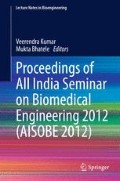Abstract
Land surface temperature (LST) on spatial and temporal domain controls vital physical, chemical, and biological processes on Earth-atmosphere system. It is also an important parameter at regional scale for energy budgeting and global circulation. Surface temperature at an instant is controlled by a large number of land surface and atmospheric phenomena viz., surface energy balance, atmospheric state, thermal properties of surface, and subsurface medium along with sensor calibration parameters. Hence, understanding the interaction of outgoing long wave radiation with each of these components is important to model LST precisely. The process of retrieval of LST from satellite data starts with radiometric calibration followed by correction for atmospheric water vapor, aerodynamic transfer function, surface emissivity as well as combined effects of viewing geometry, background, and fractional vegetative cover. Once the approximation of LST is done, it needs to be evaluated with respect to ground based measurement. In the present study, Landsat 7 ETM+ high gain thermal data was used to examine the relationship between different types of surface cover and vegetation density with sensible heat flux derived from inverse Planck’s model. Seasonal dynamics of LST under the similar land cover and vegetation condition was also examined. Large dynamic range among different land cover types was found in August (59°K) in comparison to May (22°K). The LST is highest for salt affected and barren lands during May and August, respectively. In contrast, water body appears colder in both the seasons. The result shows that there is strong relationship with surface cover and LST. Vegetation density in the nonvegetated areas does not show any distinct pattern, however, it shows similar distribution in both the seasons. On the other hand, LST decreases, in general, with increasing density of vegetated areas. Hence, the study reveals that emissivity of surface cover and vegetation density has strong influence on LST retrieval and needs to be studied vis-à-vis intrinsic soil properties, vegetation, and atmosphere condition. It would help to thermally characterize different land cover types, the convective flow, and effect on biophysical processes.
Access this chapter
Tax calculation will be finalised at checkout
Purchases are for personal use only
References
USGS (2001) Landsat 7 Science data users handbook
Schott JR, Volchok WJ (1986) Thematic mapper thermal infrared calibration. Photogrammetric Eng Remote Sens 51(9):1351–1357
Wukelic GE, Gibbons DE, Martucci LM, Foote HP (1989) Radiometric calibration of landsat thematic mapper thermal band. Remote Sens Environ 28:339–347
Sutherland RS, Bartholic JR (1979) Emissivity correction for interpreting thermal radiation from a terrestrial surface. J Appl Meteorol 18:1165–1171
Author information
Authors and Affiliations
Corresponding author
Editor information
Editors and Affiliations
Rights and permissions
Copyright information
© 2013 Springer India
About this paper
Cite this paper
Jain, P., Dutta, D. (2013). Digital Image Processing for the Thermal Images to Find Land Cover and Vegetation Density. In: Kumar, V., Bhatele, M. (eds) Proceedings of All India Seminar on Biomedical Engineering 2012 (AISOBE 2012). Lecture Notes in Bioengineering. Springer, India. https://doi.org/10.1007/978-81-322-0970-6_30
Download citation
DOI: https://doi.org/10.1007/978-81-322-0970-6_30
Published:
Publisher Name: Springer, India
Print ISBN: 978-81-322-0969-0
Online ISBN: 978-81-322-0970-6
eBook Packages: EngineeringEngineering (R0)

